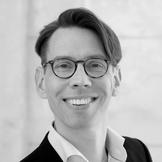Dr. Alexander Schwan

Freie Universitaet Berlin
Global Humanities Junior Research and Teaching Stay at Harvard University
Alexander Schwan is a Postdoctoral Research Associate and junior faculty member at the Institute of Theatre Studies at Freie Universität Berlin. Prior to his current position, he was trained in directing at the Academy of Music and Performing Arts Frankfurt/Main and studied Protestant theology, Jewish studies and philosophy in Heidelberg, Jerusalem, and Berlin. In his current book project, Alexander researches theological implications in the works of modernist choreographers such as Ruth St. Denis, Mary Wigman, and Martha Graham, as well as the reception of German and Austrian expressionist dance (Ausdruckstanz) in British Mandate Palestine. His scholarly interests also include the intersection of dance and visual studies, the connection of dance with plant and flower studies, and the idea of queer spirituality in contemporary dance. Alexander Schwan’s dissertation »Correlations between Dancing and Writing in the Work of Trisha Brown, Jan Fabre and William Forsythe« was awarded the 2016 Tiburtius Award.
Teaching Slot within the Summer School 2017:
Between Facsimile and Fake. On the Problems of Reconstructing Dance
Beginning with the example of Vaslav Nijinsky’s choreography for The Rite of Spring from 1913, of which no notation survived, but which nevertheless was reconstructed by Millicent Hodson and Kenneth Archer with the Joffrey Ballet in Chicago in 1987, we will explore the role of reconstruction and recreation in dance. Now a major trend due to increased funding, the reconstruction of influential dance works of the past tries to overcome the ephemerality of dance and seeks to retrieve what has inevitably been lost. We will confront this trend with contemporary performances that deal self-reflectively with the general impossibility of restaging older works and the constrictions to quote from them.
Religiousness in Early Modernist Dance
Many of the protagonists of early modernist dance understood dance movement in extremely religious terms. While escaping from the narrow boundaries of institutionalized religion on one hand, they also developed a new religion of dance on the other. Furthermore, the religious upbringing of the protagonists often influenced their ideas of dance, such that theologoumena of their confessional background corresponded to facets of their dance philosophy. I will investigate these implicit theological aspects in early modernist dance and inquire into how dance aesthetics was used to visualize and evoke varieties of spirituality. How did the protagonists of early modernist dance make use of older and openly religious arguments when they conceptualized their dance practice, and with which movements and dancing techniques did they enact these implied religious notions? Finally, what was the role of the audience in reframing early modernist dance as a phenomenon that blurred the boundaries between the ostensibly separated social spheres of religion and secular culture?
